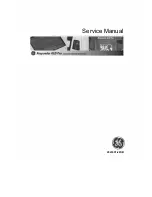
60
Chapter 11
About sound power measurements
61
Norsonic Nor118
User Guide
following values (in metres): 1, 2, 4, 6, 8, 10, 12, 14
or 16. Some of these radii may be too large to meet the
environmental requirements given in . If so, such
large values shall not be used.
e environmental requirements state that the reflect-
ing plane must not be of such a material or in such a
condition that it radiates any appreciable sound energy
due to vibration. If the measurements are made outdoors
over grass- or snow-covered ground, the measurement
distance shall not exceed 1 metre. e general requirement
is that the sound absorption coefficient of the reflecting
plane shall be less than 0.1 over the frequency range of
interest. Also no reflecting objects that are not part of the
source under test shall be located inside the measurement
surface.
Hemispherical microphone positions
If there is only one reflecting plane, the microphone posi-
tions lie on the hypothetical hemispherical surface of area
S = 2
π
r
2
, enveloping the source and terminating on the
reflecting plane. If the source under test is in front of a
wall,
S =
π
r
2
and if it is in a corner,
S = 0.5
π
r
2
.
e Fig. below left shows the location of four key
microphone positions, each associated with equal areas
on the surface of the hemisphere of radius
r.
If a source is installed adjacent to more than one
reflecting plane, the Figs. shown on the next page are
used to define a suitable measurement surface and the
microphone positions.
Additional microphone positions
Sound pressure level measurements are required at
additional microphone positions on the hemispherical
measurement surface if:
a
the range of sound pressure level values measured at the
key microphone positions (i.e. the difference in decibels
between the highest and lowest sound pressure levels)
exceeds twice the number of key measurement points,
or
b
the source radiates noise with a high directivity, or
c
the noise from a large source is radiated only from a
small portion of the source, e.g. the openings of an
otherwise closed machine.
If condition
a
exists, additional microphone positions shall
be used. For the microphone array on the hemisphere, an
additional 4-point array is defined by rotating the original
array through 180° about the
z
-axis. Note that the top
point of the new array is coincident with the top point of
the original array. e number of microphone positions
is increased from 4 to 7.
Conditions
b
and
c
require more measurements in the
region of high radiation.
z
y
x
l
1
l
2
l
3
5
4
10
6
Microphone positions on a hemisphere – key microphone
positions
Summary of Contents for nor118
Page 2: ......
Page 3: ...nor118 REAL TIME ANALYSER ...
Page 13: ...nor118 REAL TIME ANALYSER ...
Page 114: ......
Page 115: ......
















































